What is the maximum shelf life of potatoes and how to extend it
Planting and harvesting potatoes is only half the battle. It is also important to preserve the harvest. There are different options for storing potatoes and tricks that every owner should know about.
How to keep the harvest as long as possible and what affects the shelf life of potatoes, you will find out in our article.
The content of the article
Basic rules for storing potatoes
The main conditions for storing crops are tubers preparation, temperature, humidity and lighting.
Tuber preparation
Potato preparation is the most important step in the process. To begin with, the tubers are thoroughly cleaned from the ground, sorted out and sorted depending on the shelf life.
So, tubers of small size and with damage are not suitable for long-term storage (up to 10 months). These vegetables are best eaten right away. For storage, choose medium sized potatoes with a firm and smooth skin.
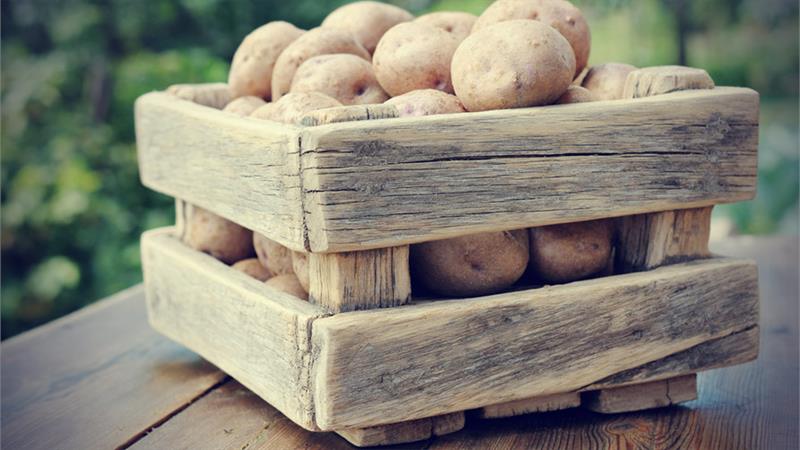
To prolong the shelf life of potatoes, they are sprayed with antifungal drugs. This procedure will prevent rotting and sprouting of tubers. For example, use a solution of copper sulfate: 2 g of the drug are used for 10 liters of water. After spraying, the vegetables are dried and, after drying, they are sent to a suitable storage location.
Important! Tubers require careful handling - they must be clean, healthy, whole and dry. Their quality affects the shelf life of the crop.
Storage conditions:
- the optimum temperature is + 2 ... + 5 ° С, and when stored in a closed container - + 18 ° С;
- air humidity - 80-90%;
- lack of light and direct sunlight;
- air circulation - the room must be constantly ventilated.
Storage containers:
- Wooden boxes - holes are made in them in advance for air circulation. Choose coniferous wood boxes (to contain the spread of fungus).
- Bags made from natural materials.
- Grids.
- Wicker baskets.
- Paper or plastic bags.
You can store vegetables in bags only in the refrigerator, otherwise the potatoes will start to deteriorate in a few days.
Terms and storage time
Not all varieties are suitable for long-term storage. Choose mid to late ripening.
Early varieties, for example, Zhukovsky, Antonina, Impala, stored for up to three months, provided that the crop was harvested after ripening. With long-term storage, potatoes of such varieties are deprived of their nutrients. Therefore, it should be eaten before the onset of cold weather.
Mid-season varietiese.g. Gala, Rosara, can be stored for 4-7 months at a temperature not higher than + 6 ° С.
Late ripening varieties – Slav, Atlant, Zhuravinka, Gull etc. - stored for up to 10 months, subject to the rules and recommendations.
Storage space in the apartment
It doesn't matter if you don't have a basement or cellar. An apartment is also suitable for preserving the harvest.
At room temperature
One of the most unreliable options for storing vegetables: the temperature of the heated room reaches 20-25 ° C, in such conditions the tubers are stored no longer than 10-15 days. After that, the process of decay and drying will begin.
Kitchen
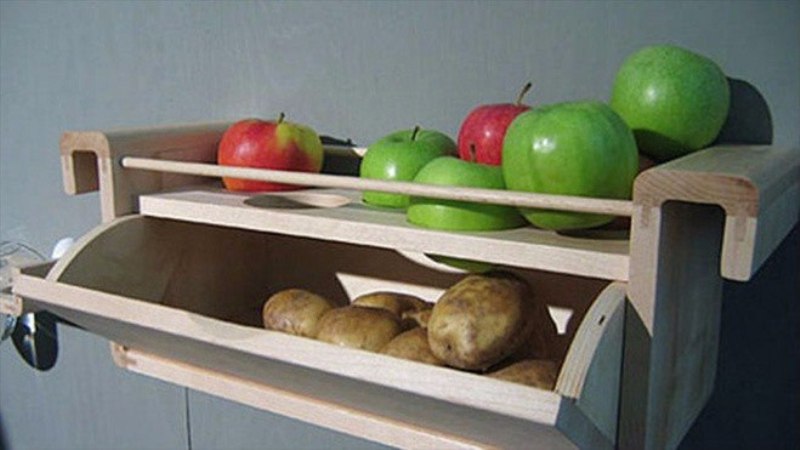
To keep potatoes in the kitchen, follow these tips:
- choose a dark and cool place: under a sink or sink, in the lower drawers of furniture or in a special cabinet for storing vegetables;
- the temperature should be about + 18 ° С;
- store in a wooden container or basket.
Pantry
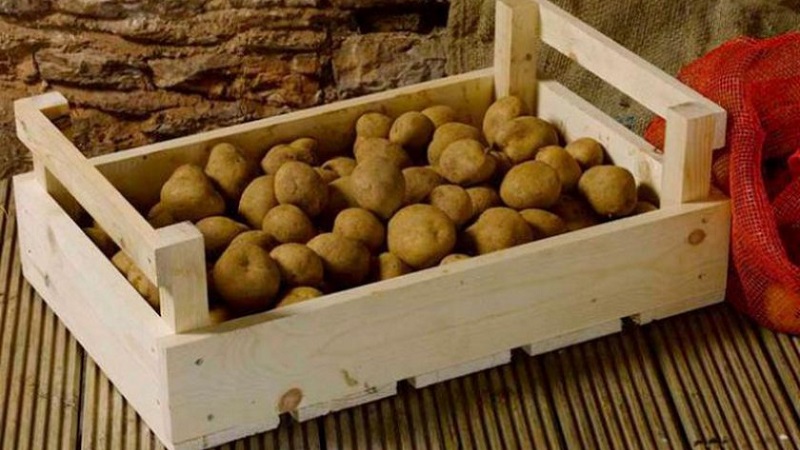
You can store potatoes in the pantry. Vegetables are packed in natural bags or a wooden box with holes.
To prevent the tubers from turning green, the boxes are covered with cardboard or thick cloth. To prevent vegetables from drying out, use a damp cloth or a humidifier.
In the freezer
For freezing, potato varieties with a minimum starch content are suitable. When frozen, the starch is converted into sugar - the tubers will become sweet.
Tuber preparation and freezing methods
Pour cold water over vegetables and leave for 20-30 minutes. After the tubers, wash thoroughly, peel, refill with cold water. Thanks to this procedure, the potatoes will not darken and become less starchy.
Freeze whole
For whole freezing, choose small tubers.
First, the potatoes are blanched. Take two medium-sized pots, pour cold water into one pan (you can add ice), and put the other on the fire. Dip the tubers in boiling water and blanch for 3-5 minutes. Take it out and immediately put it in a container of cold water. After the potatoes have cooled, spread on a towel and dry.
Important! Prepared potatoes must be dry, otherwise they will be covered with a crust of ice after freezing.
The finished tubers are laid out in bags and placed in the freezer.
Chopped potatoes
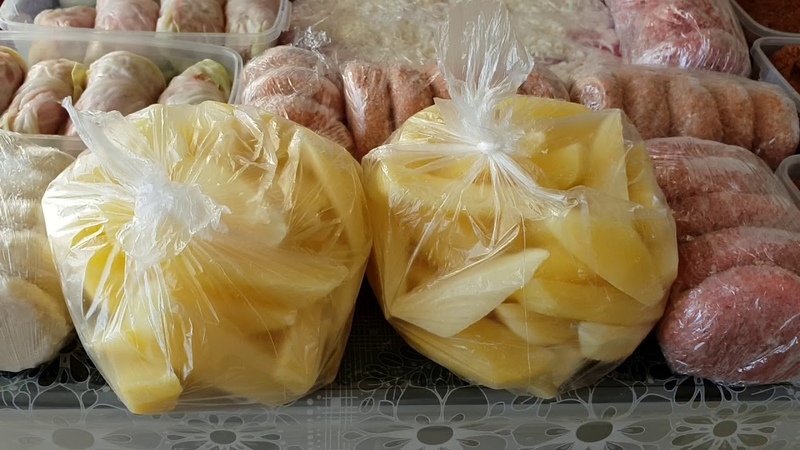
Cut the peeled vegetables into slices and salt. The salt will keep the potatoes fresher. Pour flour into a container, put the product and mix. Mix quickly or the flour will stick together.
Put the tuber in a thin layer on a tray and send it to the freezer. Then put the frozen product into containers and place in the freezer.
Attention! You do not need to defrost these potatoes before cooking.
Freezing mashed potatoes
Few people know that even mashed potatoes can be frozen. To do this, peeled potatoes must be boiled and pounded. After that, cool, pack in bags (can be used with an airtight seal) and send to the freezer.
Freezing fried potatoes
To preserve this version of the potato, it is cut into pieces and lightly fried in a pan. Salt and spices can be added if desired. The dish is cooled, excess fat is removed with a napkin or towel and placed in portions in bags. The finished product is sent to the freezer.
Attention! Fried potatoes and mashed potatoes retain their properties for two weeks, while vegetables, frozen in whole or in pieces, are stored for about three months.
In a refrigerator
A refrigerator is suitable for storing small amounts of potatoes. It is best to store in plastic bags or paper bags at a temperature of + 5 ... + 7 ° C.
This option is not suitable for long-term storage (maximum 1-2 weeks).
On the balcony
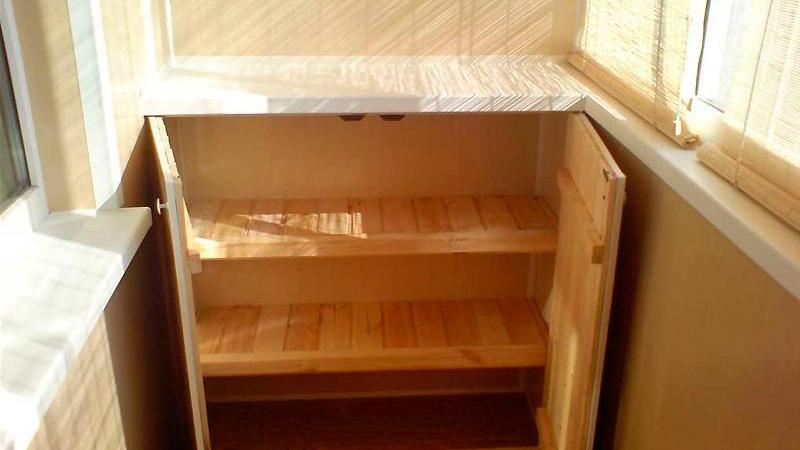
You can use a glazed balcony or an unheated loggia. As a container, wooden boxes are used, which are insulated in advance with foam. The air temperature in this room should be + 5 ... + 12 ° С, humidity - 30-50%. Avoid direct sunlight.
Other places
There are other places for harvest conservation.
Entrance or corridor
If there is not enough space in the apartment, store potatoes in the entrance. In such a room there are no sources of natural light, it is periodically ventilated and a suitable temperature is observed (+ 4 ... + 6 ° С). Use wooden crates with ventilation holes for storage. Cover the potatoes with a blanket or other insulating material to prevent spoilage.
How to tell if a potato has gone bad
Even the best quality potatoes can go bad.
To preserve the harvest, as well as to protect yourself, pay attention to the following signs:
- rot;
- the presence of processes (more than 2 cm);
- rugosity;
- blackening of the tuber;
- wateriness.
If you find these signs on vegetables, throw them away immediately. Such potatoes are unsuitable for storage and consumption, in addition, the contamination will spread to the rest of the crop.
Useful tips to keep potatoes for longer
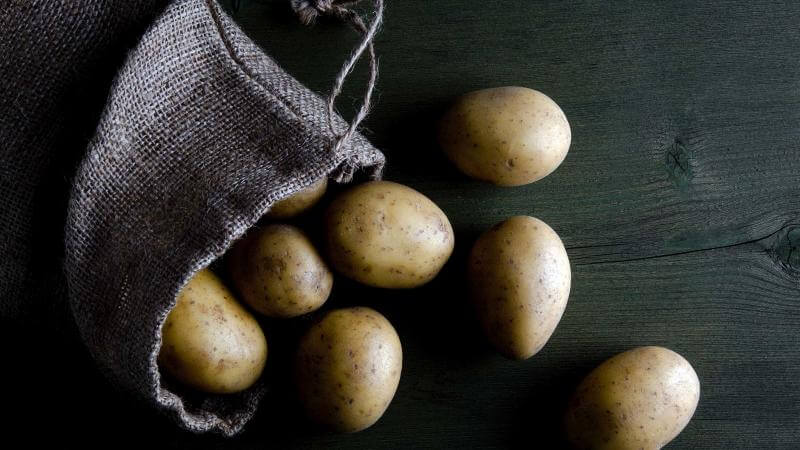
These tricks will help keep potatoes longer:
- To prevent the potatoes from sprouting, add half an apple to the boxes. It will absorb excess moisture. The method will be effective for the first 6-7 weeks of storage.
- Plants that emit phytoncides will help keep potatoes longer. To do this, use rowan leaves, pine or spruce branches.
- Pounded garlic will protect the crop from rot: 10 g of garlic is enough for 10 kg of potatoes.
- Elderberry and fern leaves, as well as mixing tubers with leaves of wormwood and common snow will protect from rot.
- To delay germination, mint leaves are used.
- Shifting the potatoes with onion skins will keep them much better.
- Ginger root promotes long-term storage of tubers.
- Sort vegetables periodically and discard spoiled ones.
- Do not store potatoes with other vegetables. An exception is beets, which absorb excess moisture.
- Cover the vegetables with straw for severe frosts.
Conclusion
Storing crops in an apartment is easy if you follow the above recommendations. Determine correctly the place and container, control the temperature and humidity, ventilate the room, and periodically select spoiled tubers. By following these rules, you will save your harvest without big losses.